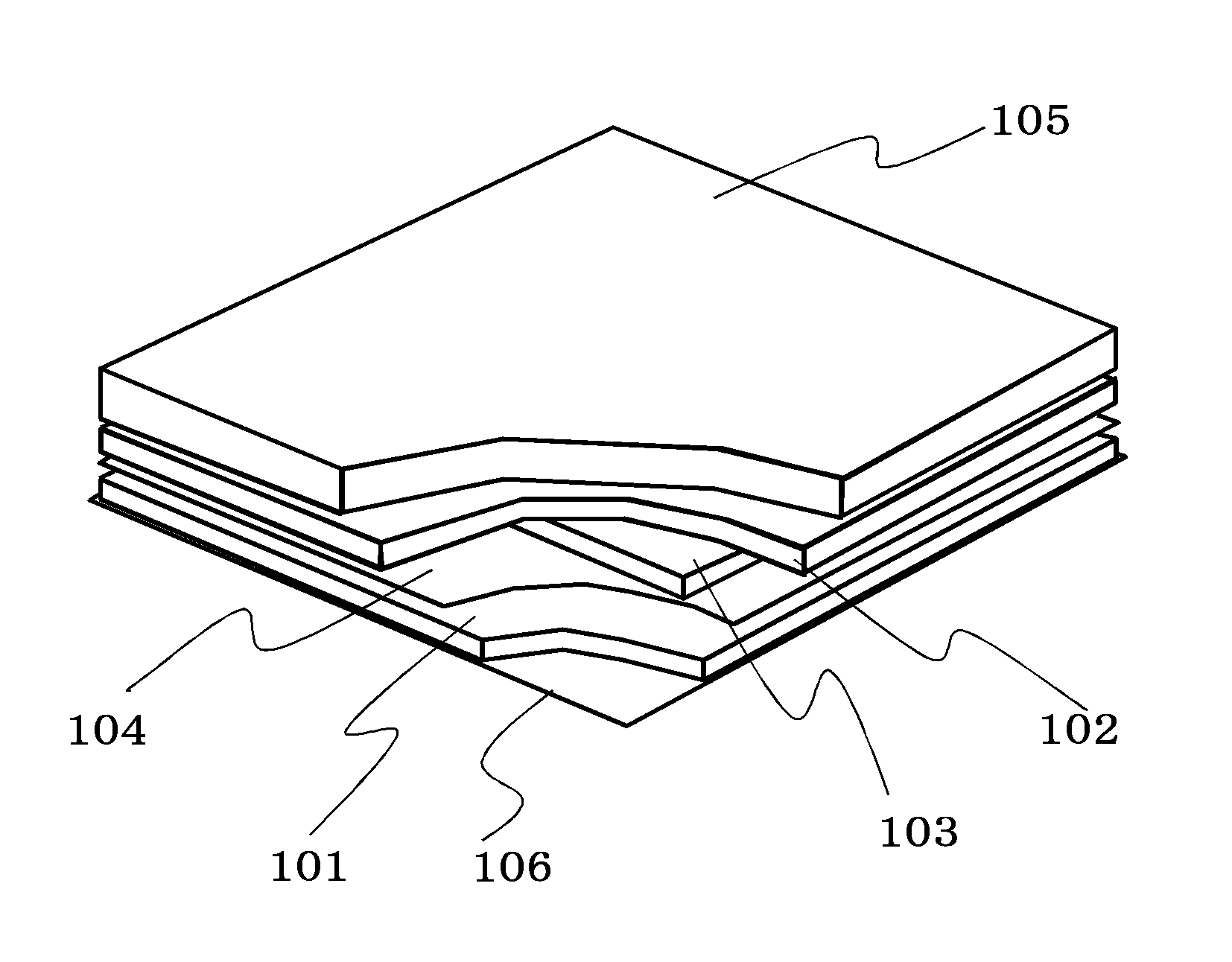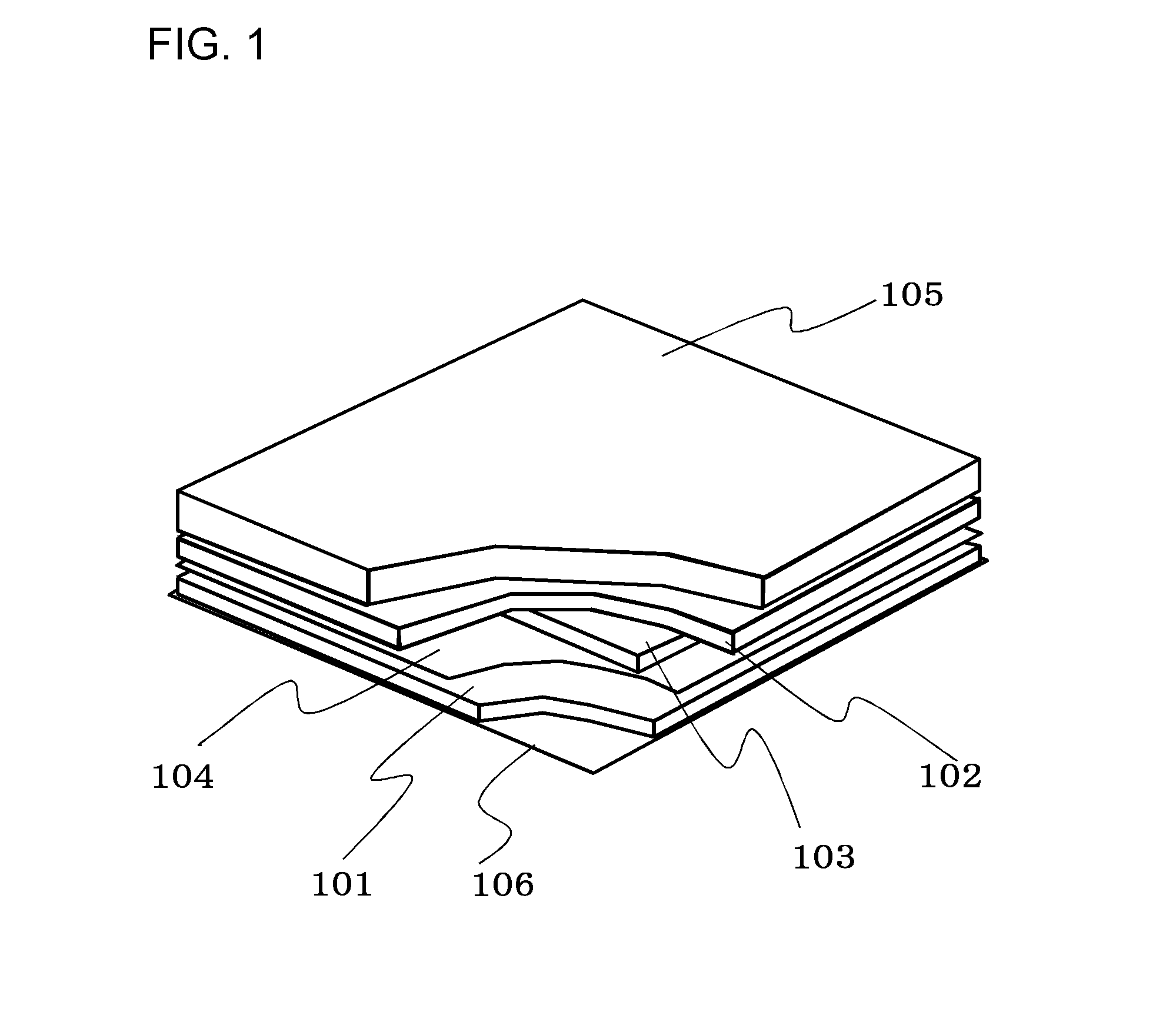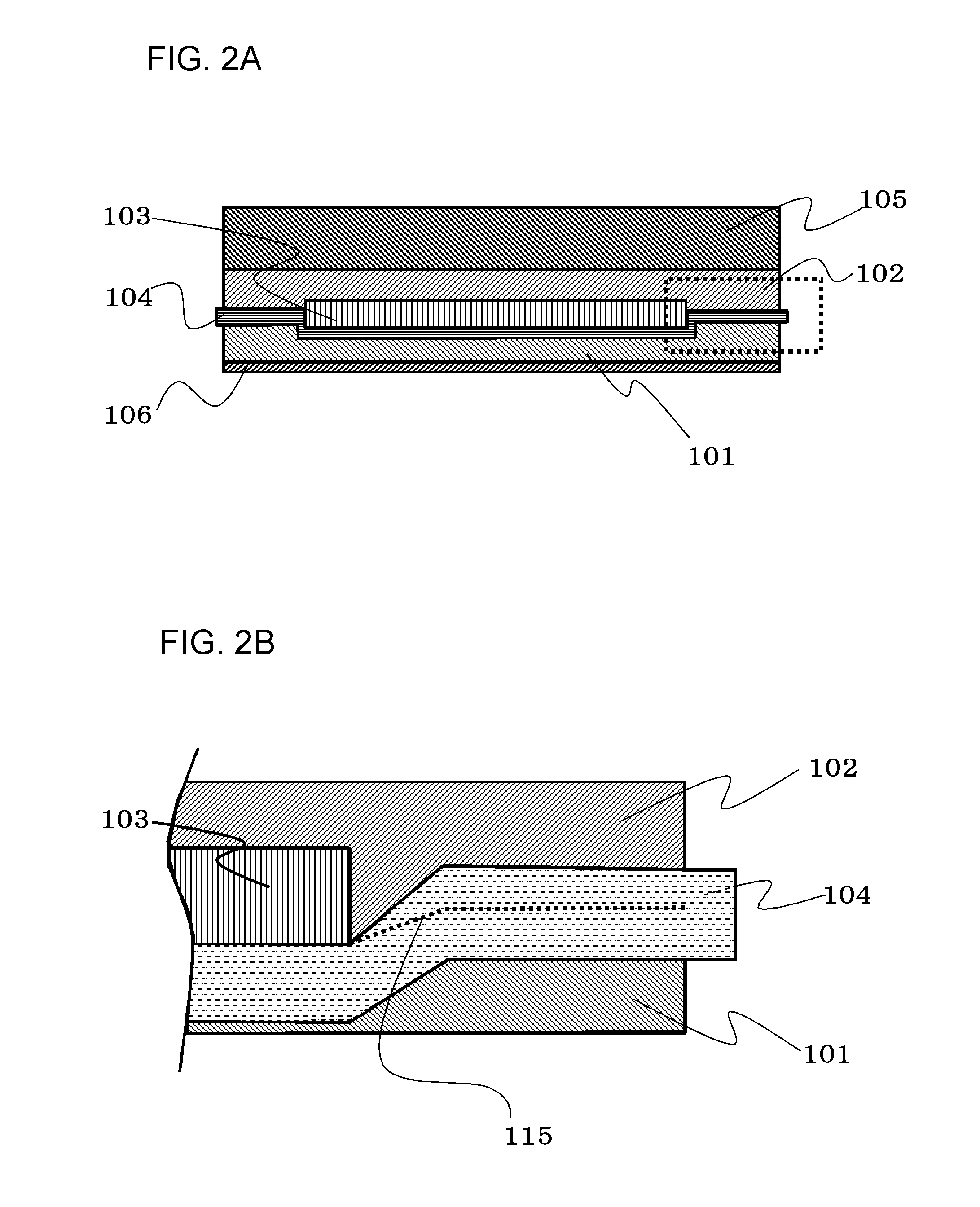Solar cell module
- Summary
- Abstract
- Description
- Claims
- Application Information
AI Technical Summary
Benefits of technology
Problems solved by technology
Method used
Image
Examples
embodiment 1
[0029]FIG. 1 is a perspective view showing a state where part of a solar cell module according to Embodiment 1 is peeled, FIG. 2A is a cross-sectional view thereof and FIG. 2B is a cross-sectional view obtained by enlarging a portion surrounded by dotted lines of FIG. 2A.
[0030]The solar cell module according to Embodiment 1 includes a solar cell device 103, an upper sealing portion 102 positioned over the solar cell device 103, a porous body 104 positioned below the solar cell device 103, a lower sealing portion 101 positioned below the porous body 104, an uppermost protective member 105 positioned over the upper sealing portion 102 and a back sheet 106 positioned below the lower sealing portion 101.
[0031]The solar cell device 103 is sandwiched between the upper sealing portion 102 and the lower sealing portion 101. A dotted line of FIG. 2B denotes an interface 115 between the upper sealing portion 102 and the lower sealing portion 101.
[0032]Vacuum lamination is performed in a state...
embodiment 2
[0046]In Embodiment 2, a portion in which the solar cell device 103 is inserted is provided as an opening in the porous body 104. The opening will be explained with reference to FIG. 3A, FIG. 3B, FIG. 4A and FIG. 4B. Components not to be explained are the same as those of Embodiment 1.
[0047]FIG. 3A is a perspective view obtained by breaking a corner portion of the solar cell module. FIG. 3B is an exploded view for explaining the relation between the solar cell device 103 and the porous body 104. FIG. 4A is a cross-sectional view of the solar cell module and FIG. 4B is an enlarged cross-sectional view of a portion surrounded by dotted lines of FIG. 4A. A dotted line in FIG. 4B is an interface 115 between the sealing material of the upper sealing portion 102 and the sealing material of the lower sealing portion 101. A sealing resin enters the porous body 104.
[0048]An opening 114 is provided in the porous body 104 as shown in FIG. 3B, and the size of the opening 114 is larger than the ...
example 1
[0066]As the sealing material of the upper sealing portion 102, the ethylene-vinyl acetate copolymer (EVA) sheet with a total light transmittance of 92% (measured by Haze Meter-HR-100 manufactured by MURAKAMI COLOR RESEARCH LABORATORY) was used. As the sealing material of the lower sealing portion 101, a sealing material obtained by allowing the ethylene-vinyl acetate copolymer to contain 5 wt % rutile-type titanium dioxide with a total light reflectance of 75% (measured by Haze Meter-HR-100 manufactured by MURAKAMI COLOR RESEARCH LABORATORY) was used.
[0067]Subsequently, a polyester spunbond as an organic nonwoven fabric was used for the porous body 104.
[0068]As a lamination method, the EVA sheet with the total light transmittance of 92% as the sealing material of the upper sealing portion 102 was put on a white-plate tempered glass as the uppermost protective member 5, and the solar cell device 103 was put thereon. Next, the polyester spunbond as the organic nonwoven fabric was ove...
PUM
 Login to View More
Login to View More Abstract
Description
Claims
Application Information
 Login to View More
Login to View More - R&D
- Intellectual Property
- Life Sciences
- Materials
- Tech Scout
- Unparalleled Data Quality
- Higher Quality Content
- 60% Fewer Hallucinations
Browse by: Latest US Patents, China's latest patents, Technical Efficacy Thesaurus, Application Domain, Technology Topic, Popular Technical Reports.
© 2025 PatSnap. All rights reserved.Legal|Privacy policy|Modern Slavery Act Transparency Statement|Sitemap|About US| Contact US: help@patsnap.com



